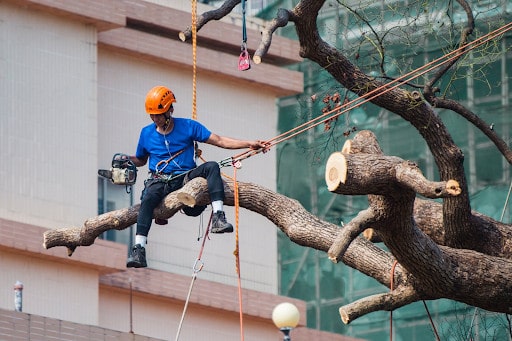When you decide to remove trees from your property, you must be prepared to deal with certain complications. There are some major safety concerns, such as hazardous leaning trees. Read on to learn more about how to remove them from your property safely and legally.
Dos and don’ts
Contents
When it comes to removing trees from your property, there are certain dos and don’ts that should be followed. One of the most important steps to take is to get it removed safely. Whether you’re doing it yourself or hiring a professional care service, you’ll want to use the appropriate equipment and follow all safety guidelines.
It is a complicated task that can cause damage and be dangerous if not done properly. Before you begin the tree removal process, you should clear the land around it so that the area surrounding it won’t get damaged. Also, be sure to leave enough room so that it falls in the right direction. Having enough space to work with will make the process easier.
Additionally, you should prune any extra branches that might add to the weight of it when it falls. If it is growing close to a power line, it may cause a power outage during storms. Trees can cause damage to your property if they fall on the power lines or utility lines, so be sure to check the species of trees in your area before cutting them down.
Hazards of leaning trees
Leaning trees are an obvious danger to your property, and they should be removed as soon as possible. They can collapse, causing significant damage to vehicles, buildings, and people. When removing them from your property, you should carefully inspect them.
If you notice any signs of decay, rot, or other issues, call a professional company for advice.
If you notice fungus on the leaves or in the trunk of it, there is a good chance that it is infected. The infection will affect its roots and can lead to learning.
It is best to call a certified arborist to evaluate its condition. Plants that have a rotten root system should be removed immediately. The safety of people and property depends on every member of a community. Everyday citizens are the foundation of a successful city.
By removing dangerous urban trees, everyday citizens can contribute to the safety of the community. By hiring a professional service, you can rest assured that a professional will be able to assess the risk and make an action plan that meets your expectations. This peace of mind is invaluable when dealing with serious hazards.
Leaning trees are particularly dangerous, as they pose a serious risk of falling. A limb can fall and strike a vehicle, person, or structure. This is a very high risk of damage and may even lead to a lawsuit. For this reason, you should consider hiring a service to inspect it on your property to avoid liability and damage to your property.
Safety concerns
If you’re considering removing trees from your property, it’s important to understand the safety concerns associated with the project. Many large plants near buildings and houses present a risk to human safety and can cause serious damage if they fall.
OSHA has established General Industry standards for lawn care, which address the risks that are common in professional lawn care. These standards are outlined in 29 CFR SS 1910. Failure to follow these standards could result in citations from OSHA. It is a dangerous task and requires the full attention of all workers.
A falling branch can cause serious injury or even death. Leaving a stump on your property is also dangerous, and can become a liability for you if you don’t remove it properly. Whether you’re performing the work yourself or hiring a professional, these safety considerations should be addressed before you begin.
Another safety concern when removing unwanted foliage from your property involves fire safety. There are many ways to reduce the risk of fires. One way to reduce the risk is to hire a certified arborist to inspect it on your property. They can assess the safety of your trees and make recommendations based on their health and resistance to fire.
Costs
If you need to get rid of a large tree, it is important to find out how much it will cost to have it removed. The costs vary according to the length and weight of it. For instance, removing a 60-foot plant could cost as much as $1,500.
For less money, you could have multiple smaller organisms or two medium-sized ones removed. Additionally, you must consider the extent of its roots. Extensive roots can damage your driveway, lawn, and house foundation. Another factor in the cost is the amount of clearing required. Some organisms require a large amount of clearing.
You may want to consider clearing the area yourself to save money on the overall cost. Additionally, if it is more than 10 feet high, you’ll need to obtain a permit from the local government. Most jurisdictions require that you pay a fee for a permit, which can range from $60 to $150.
Other factors that will influence the price include the type of plant and its location. If it is located near a house or other structure, it will cost more to remove safely. Also, if it is located in an area that is difficult to access, the removal cost will be more.
